For the past week, a group of art students from the University of The Bahamas have been examining art in Toronto—in museums, galleries, and back alleys—as part of the Decolonizing Art from Turtle Island to the Islands of the Bahamas residency programme, a unique partnership between OCAD University, the University of The Bahamas, and Project I.C.E (Incubator for Collaborative Expression), that explores how colonialism has shaped how we appreciate, appraise, and understand art.
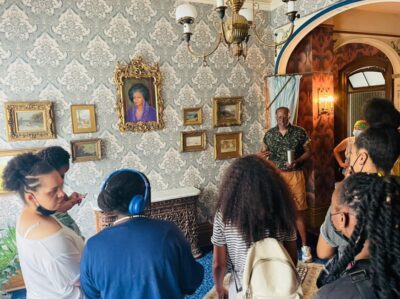
Artist Gordan Shadrach gives the Bahamian Artists a tour of his exhibition Dis/Mantle at Spadina House
The residency was created to question the hierarchies of art, and investigate the systems that have supported the oppression of non-white artists. “When we speak about creativity, many of our experiences of art are filtered through a colonial lens. Meaning that we have been taught through our education systems that the best art is European art — the art of Michelangelo, da Vinci, Van Gogh, and Picasso. While these artists were being elevated in our textbooks, Indigenous Art and art of the African diaspora were being erased, destroyed and denigrated,” says Professor Ilene Sova, who originated the Decolonizing Studio Art Education Committee at OCAD U with her co-researcher Nadia McLaren, who works with the Centre for Wise Practices at Women’s College Hospital, specializing in Indigenous Health and Education.
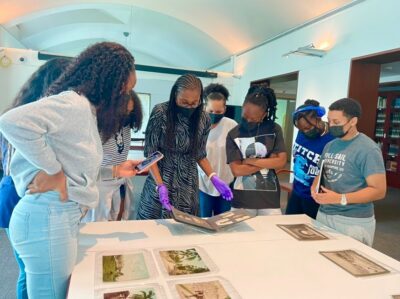
A visit to the AGO with Julie Crooks, Curator, Arts of Global Africa and the Diaspora. The students received a private viewing of some of the Bahamian photos housed within the Montgomery Collection of Caribbean Photographs.
The Power Plant, ROM, Spadina House, Graffiti Alley, Kensington Market, the Gardiner, and the AGO are some of the spots where art & history talks, tours, and lessons have taken place. The group also attended Caribbean Carnival and spent a day exploring the Petroglyphs Provincial Park, which contains the largest collection of ancient First Nations petroglyphs in Ontario—the art that has existed for thousands of years before settlers arrived.
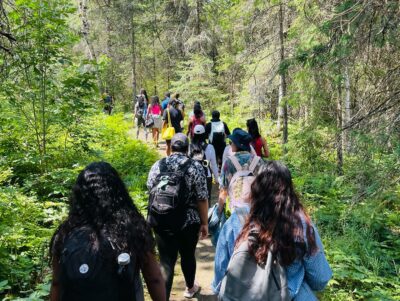
Students walk into the provincial park to view the Kinoomaagewaabkong, The Teaching Rocks ( Peterborough Petroglyphs) hosted by Elder Liz Osawamick.
“Decolonizing Art from Turtle Island to the Islands of the Bahamas was envisioned to consider how artists on Turtle Island and the Islands of the Bahamas had many layers of experiences in common because they were both colonized by the British Empire. We wanted to bring emerging artists together from both locations to discuss how they could work to build, resist and reimagine artwork that celebrated their ancestors and cultural experiences and tell the stories of their specific lived experiences,” says Sova.
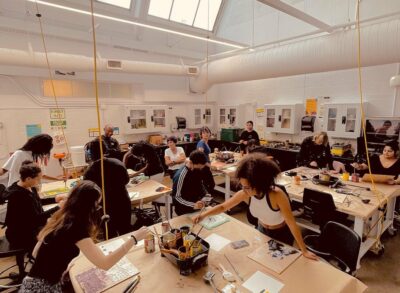
An encaustic painting workshop at OCAD U with a history of funerary portraits taught by artist Nicole Collins.
OCAD U students in the Decolonizing Art residency visited Nassau in May, and experienced a similar packed and vibrant itinerary, participating in workshops at the university, visiting local galleries and museums, meeting with Bahamian artists, as well as a powerful trek to The Clifton Heritage National Park to view the moving Sacred Spaces art installation by Antonius Roberts. “We are hoping that by viewing the art of these amazing contemporary artists and by having these important conversations, the artists in the programme will be excited, inspired and motivated to tell us the erased stories of their lived experiences on lands that have been colonized. We are also hoping that they build a community of artist friends and mentors that will sustain them in their journey as artists going forward with this important work.”
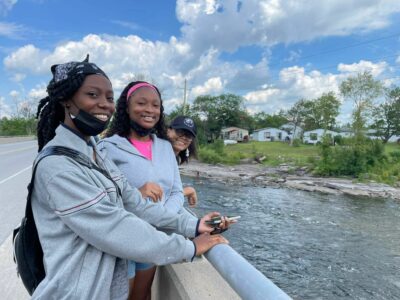
Bahamian artists at Burleigh Falls.
For Sova, every stop of the tour has been an important and memorable experience, but watching the students, from both schools, form friendships and collaborate has been an especially rewarding result of the partnership. “This community building that is happening outside of the residency’s official itinerary is the most beautiful and inspiring aspect of this whole international exchange.”
We love that this programme exists, and hope it inspires other schools, organizations, and cultural institutions to look beyond borders.
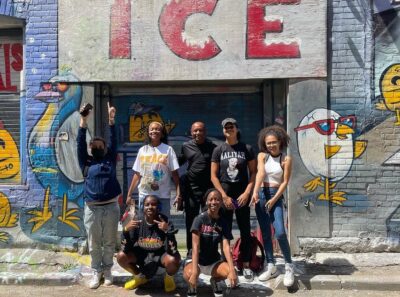
Bahamian artists from Project Ice posing in graffiti alley with their mentor Antonious Roberts on their tour with local artist and Worth Gallery Director Adrian Hayles.
At the end of the residency this Friday, August 5th, students will share their studio in-process artwork in the Ada Slaight Gallery at OCAD University from 6:00 to 8:00 pm. Light refreshments will be served.


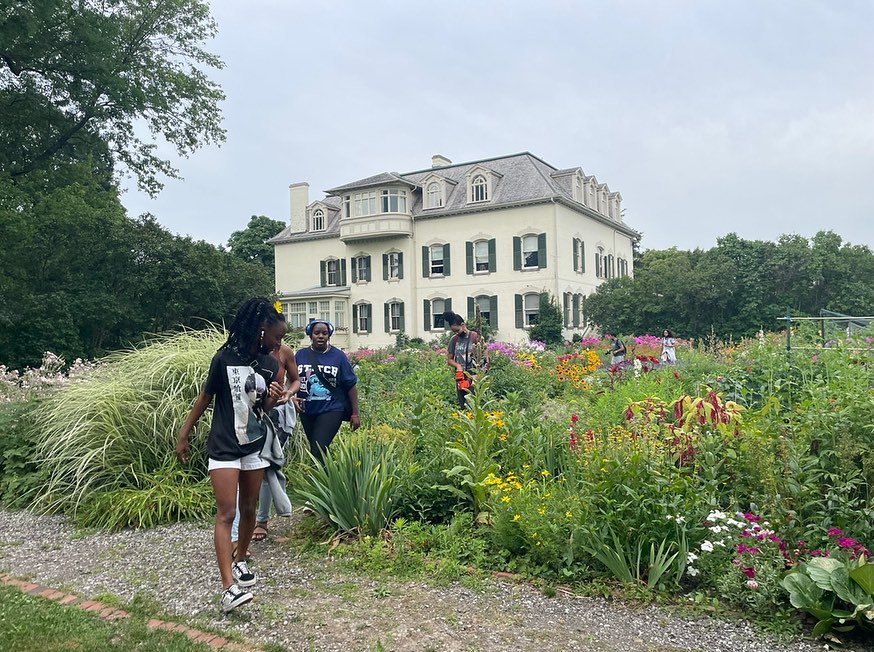
 Follow Us On Instagram
Follow Us On Instagram
